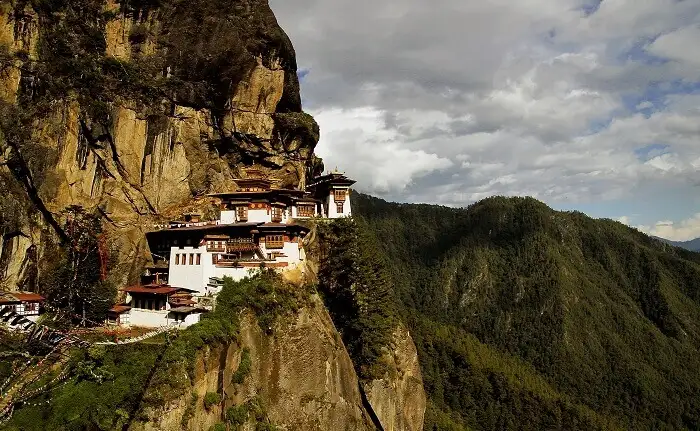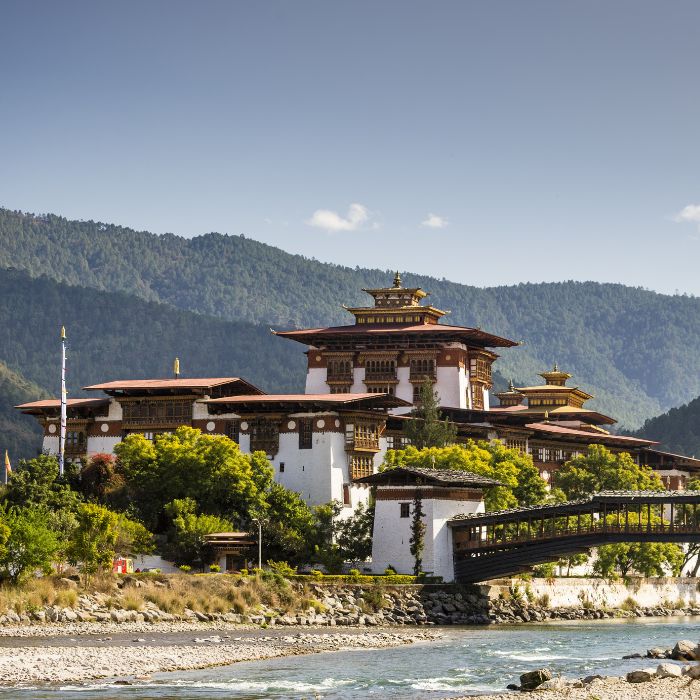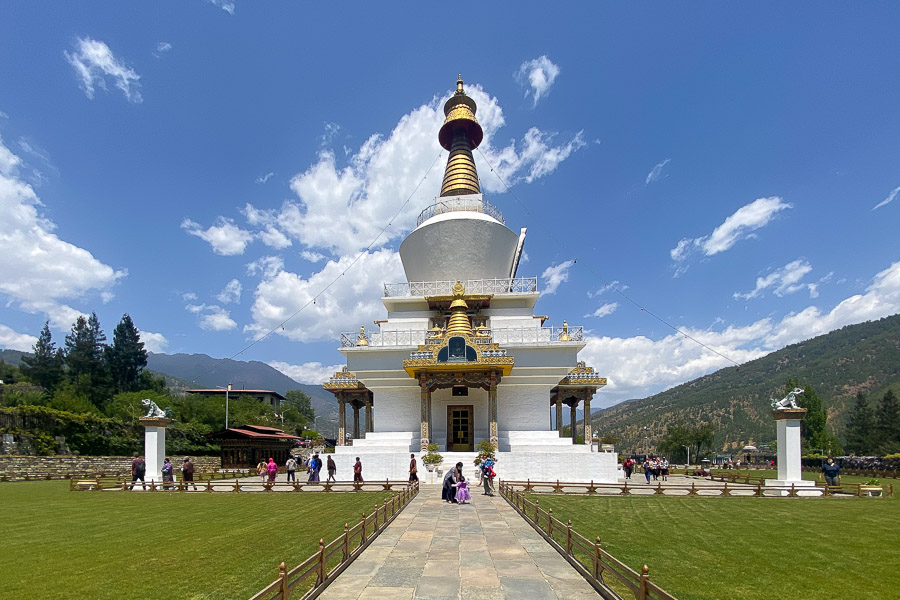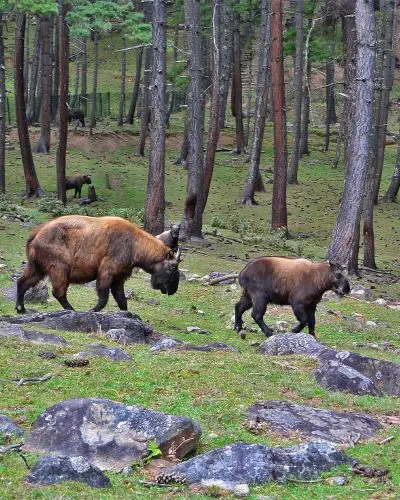Buddha Dordenma statue

The Buddha Dordenma statue, also known as the “Buddha Point,” is an iconic monument situated in the serene mountains of Bhutan, near the capital city, Thimphu. This colossal and awe-inspiring statue of Lord Buddha stands at an impressive 169 feet (51.5 meters) in height, making it one of the largest Buddha statues in the world.
The Buddha Dordenma statue is made of bronze and gilded in gold, exuding an air of magnificence and serenity. Its construction was initiated to commemorate the centenary of Bhutan’s monarchy and to promote world peace and happiness. The statue is a symbol of Bhutan’s deep-rooted spirituality and commitment to preserving its cultural heritage.
Visitors to the site are not only captivated by the sheer size and grandeur of the statue but also by the breathtaking panoramic views of the surrounding Himalayan mountains. The peaceful atmosphere, lush greenery, and the occasional sound of prayer flags fluttering in the wind create an aura of tranquility that encourages contemplation and meditation.
The Buddha Dordenma statue has become an important pilgrimage site and a must-visit destination for tourists and spiritual seekers. It stands as a testament to Bhutan’s dedication to Buddhism and its aspiration for global harmony and spiritual enlightenment.
Paro Taktsang

Paro Taktsang, also known as the “Tiger’s Nest Monastery,” is an iconic and sacred Buddhist site perched on the edge of a steep cliff in the Paro Valley of Bhutan. This extraordinary monastery is one of Bhutan’s most revered and picturesque landmarks, attracting pilgrims and tourists from around the world.
The name “Tiger’s Nest” is derived from the legend that Guru Rinpoche, the father of Bhutanese Buddhism, flew to this location on the back of a tigress to meditate in a cave. The monastery complex, with its stunning white buildings adorned with colorful prayer flags, is a marvel of architectural and spiritual significance. It’s a challenging hike to reach the monastery, requiring several hours of walking through lush forests and steep ascents, but the journey is rewarded with breathtaking vistas of the surrounding Himalayan mountains.
Inside the monastery, visitors can explore various temples and sacred shrines while also admiring the intricate artwork and religious relics. Paro Taktsang is not only a testament to Bhutan’s rich religious heritage but also a symbol of the country’s natural beauty and the harmonious coexistence of spirituality and nature. It is a must-visit destination for those seeking spiritual enlightenment and a deeper understanding of Bhutan’s cultural and natural treasures.
Tashichho Dzong

Tashichho Dzong, often referred to as the “Fortress of the Glorious Religion,” is a majestic and significant architectural marvel located in the capital city of Bhutan, Thimphu. This grand fortress-monastery serves as a vital administrative and religious center in the Land of the Thunder Dragon.
Tashichho Dzong is a blend of Bhutanese and Tibetan architectural styles, showcasing the country’s unique aesthetic and cultural traditions. It houses various government offices, including the king’s administrative offices, the National Assembly, and the summer residence of the Central Monk Body. The monastery section of the dzong is home to monks who engage in religious practices and rituals.
The dzong is most renowned for its annual Tshechu festival, a vibrant celebration featuring masked dances, music, and religious ceremonies that draw both locals and tourists. The serene courtyards, intricate woodwork, and beautifully painted murals in the interior make it an architectural gem.
Besides its administrative and religious importance, Tashichho Dzong also offers visitors a glimpse into Bhutan’s rich culture and heritage. It stands as a symbol of Bhutan’s dedication to preserving its traditions and harmonizing the spiritual and secular aspects of the nation. The dzong’s strategic location, overlooking the Wang Chhu River, adds to its allure, making it a must-visit destination for those exploring Bhutan’s unique blend of history, religion, and governance.
Punakha Dzong

Punakha Dzong, also known as “Pungthang Dewachen Phodrang” or the “Palace of Great Happiness,” is a prominent fortress-monastery situated in the verdant Punakha Valley of Bhutan. It holds historical, religious, and architectural significance, making it one of the most important and picturesque dzongs in the country.
Constructed in 1637, Punakha Dzong served as the capital of Bhutan until the 1950s and continues to be the winter residence of the Central Monk Body. The dzong is known for its exquisite architecture, characterized by white-washed walls, golden spires, and ornate woodwork. Its location at the confluence of the Pho Chhu (Father River) and Mo Chhu (Mother River) adds to its scenic charm, making it a favorite destination for both tourists and pilgrims.
The interior of Punakha Dzong boasts magnificent courtyards, elaborately painted murals, and various shrines dedicated to Bhutanese Buddhism. The dzong is also famous for hosting the Punakha Tshechu, a colorful festival featuring masked dances, religious ceremonies, and vibrant celebrations.
Punakha Dzong is not only a historical and spiritual hub but also a symbol of Bhutan’s rich culture and traditions. Its serene ambiance and stunning backdrop of the Himalayan foothills make it a compelling destination, offering a glimpse into Bhutan’s heritage and the seamless blend of religion and nature that characterizes the country.
Memorial Chhorten

The Memorial Chorten, also known as the Thimphu Chorten or the Thimphu Memorial Chorten, is an iconic and spiritually significant landmark located in the heart of Thimphu, the capital city of Bhutan. This stupa, which was constructed in 1974 to honor the third king of Bhutan, Jigme Dorji Wangchuck, serves as a place of worship, reflection, and pilgrimage for both locals and tourists.
The Memorial Chorten is a shining example of Bhutanese architecture, featuring a traditional Tibetan-style design with its white exterior and golden spires. The chorten is adorned with intricate mandalas, religious symbols, and prayer wheels, making it a visually captivating structure.
Inside the chorten, the atmosphere is serene and contemplative, with flickering butter lamps and the sound of murmured prayers filling the air. Visitors often find a sense of tranquility and spiritual solace within its walls. The chorten is especially vibrant during morning and evening hours when locals and devotees gather to circumambulate it, spinning prayer wheels and chanting mantras.
The Memorial Chorten stands not only as a tribute to Bhutan’s beloved king but also as a symbol of the country’s deep-rooted Buddhist faith and its commitment to preserving its cultural heritage. It remains a focal point of religious and cultural life in Thimphu, a testament to Bhutan’s unique blend of tradition and modernity.
Takin Preserve

The Takin Preserve, located in the serene hills of Thimphu, Bhutan, is a unique wildlife sanctuary dedicated to the preservation of the Takin, Bhutan’s national animal. The Takin is a peculiar-looking creature, often described as a cross between a goat and a cow, with its robust body, short legs, and large head.
Established in 1976, this sanctuary is not only a vital conservation effort but also a symbol of Bhutan’s reverence for nature. The Takin is deeply woven into Bhutanese folklore and culture, and the preserve provides a safe and natural habitat for these remarkable creatures. It is also home to a variety of other indigenous Himalayan wildlife species and serves as an educational resource for visitors interested in Bhutan’s rich biodiversity.
The preserve’s scenic location, surrounded by lush forests and picturesque landscapes, offers visitors an opportunity to observe these unique creatures in their natural habitat. The facility is well-maintained and provides a peaceful setting for both the Takin and those who come to admire them.
The Takin Preserve is a testament to Bhutan’s commitment to environmental conservation and its harmonious coexistence with the natural world. It is an essential stop for wildlife enthusiasts and nature lovers who want to experience Bhutan’s incredible biodiversity and its cultural connection to the environment.